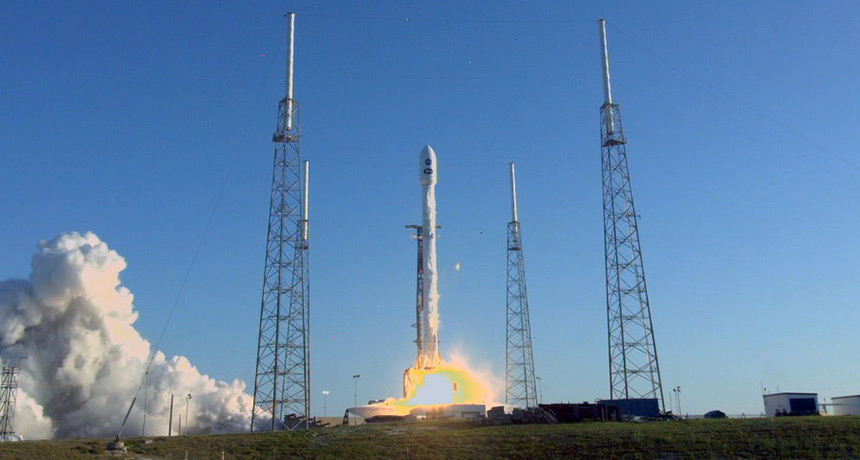NASA’s TESS spacecraft launches to begin its exoplanet search

UP, UP AND AWAY NASA’s TESS telescope launches from Cape Canaveral, Fla., on April 18 on a mission to search for planets orbiting nearby, bright stars.
NASA

UP, UP AND AWAY NASA’s TESS telescope launches from Cape Canaveral, Fla., on April 18 on a mission to search for planets orbiting nearby, bright stars.
NASA